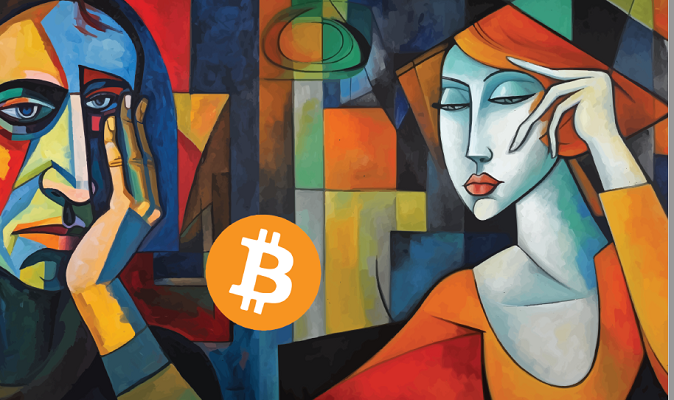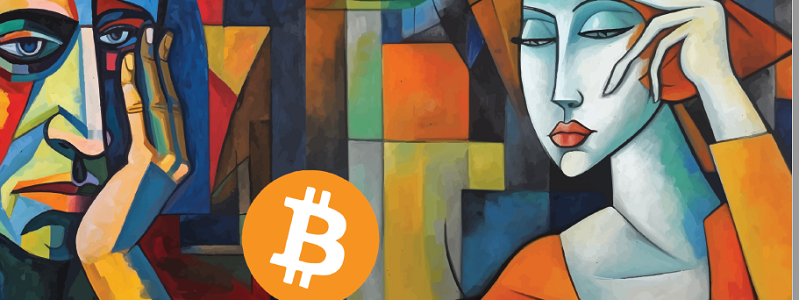FUD For Thought – part 1…

This is part 1 of an article Vlad Costea wrote in his e-magazine “BTCTKVR 3: Breaking FUD”, released May 2023. He takes an honest look at other issues Bitcoin faces.
“FUD For Thought – part 1
PROBLEMS, FUNGABILITY, PRIVACY, SECURITY BUDGET, WEALTH DISTRIBUTION
For all the certainties that it offers and all the FUD that it can destroy through its continued existence, Bitcoin is still not perfect. Users and programmers must still deal with some of the system’s design choices that leave room for speculation.
For instance, the single biggest bet in Bitcoin is that the network will one day benefit from the same security incentives while only paying miners with transaction fees. The diminishing block subsidy is an essential part of Bitcoin’s economic system: every 210.000 blocks (approximately 4 years), the mining rewards get cut in half. Back in January 2009, it was established that the mining reward would be 50 bitcoins per block. Then it got reduced in half in November 2012, and once again in July 2016, and May 2020.
As of May 2023, miners receive 6.25 bitcoins + transaction fees. And sometime next year, this reward will get reduced to 3.125 BTC per block. This halving trend will go on until the year 2140, when the entirety of the 21 million coins will have entered circulation. After this point, Bitcoin will be an entirely deflationary monetary system.
But what’s also worth mentioning is that, by May 2024 when the next block reward halving should take place, 93.75% of all bitcoins will already have been mined. So, most of the supply is in circulation, the costs toproduce1BTCare higher, and therefore only the most efficient miners will survive. The only winning combination involves affordable and abundant electricity (nuclear, solar, wind, and/or hydro) accompanied by high throughput mining hardware which produces more hashes per kilowatt. If mining remains stagnant across halving cycles, then the game theory becomes more complicated.
This issue is generally referred to as “the Bitcoin security budget”, and questions to which extent existing subsidies will be able to keep the miners profitable in the future. It’s estimated that, by year 2032, the transaction fees will already pay the miners better than the block reward of 0.78125 BTC. But some analysts are uncertain whether or not Bitcoin users are willing to constantly pay high fees.
There Are 6 Main Ways To Fix The Security Budget Issue, which I will present from the most popular to the least supported:
- The bitcoin price doubles every 2 years, so that the diminished BTC reward is worth just as much in US dollars. Though this scenario is the most popular, we’ve reached a point where it takes half a trillion US dollars to double today’s price and it will take another trillion dollars to make the same successful transition in 2028 (then two trillions in 2032, four trillions in 2036, and so on).For reference, Apple and Microsoft have a cumulated market capitalization of $5 trillion, while goldisat$13.36trillion.Evenifweassume that inflation through money printing goes on and gets worse over the years, a bitcoin price that doubles every 210.000 blocks still requires a lot of liquidity that may not always come.
- With help from merge-mined sidechains such as RSK and Drive chains that get a lot of traction, Bitcoin miners manage to collect more transaction fees across multiple parallel chains. The main chain fees don’t increase too much, as most of the activity takes place on second layers. But the increased number of transactions in the ecosystem will compensate.
- The bitcoin transaction fees will perpetually double after every halving cycle, to make up for the diminishing revenue. This is a social solution, as it relies on the good faith of others and their willingness to voluntarily pay higher transaction fees to keep the current miners running. Also, the fees don’t have to double – they can increase proportionally with the price, so that miners get paid an amount which incentivizes them to keep going.
- Do nothing and let the miners lose money until they find cheaper energy sources, improve their equipment, or else give up. This solution incentivizes efficiency and innovation in terms of hashes per watt, but also completely takes out miners that don’t keep up. If the consequence of this purge drastically affects the hash rate, then all Bitcoin users will probably wait for more than 6 confirmations until they establish that a transaction becomes final.
- Increase the block size, hoping that more transactions will come. This is difficult to pull off because it requires a hard fork (all users abandon the chain and move to an upgraded one), it negatively affects the miners’ revenue during times of low demand, and it centralizes the network much more during and after times of high demand. Also, this type of scaling doesn’t guarantee anything in terms of users and adoption – Bitcoin Cash, the big block clone of Bitcoin, didn’t manage to get traction in commerce in spite of aggressive marketing campaigns in 2017 and 2018.
- Change the monetary policy to add inflation/tail emission. This is, by far, the most unpopular approach- and the one that will only be taken seriously if Bitcoin finds itself in a phase where the fees don’t make up for the declining block subsidy. It implies expanding the 21million bitcoin cap in order to pay the miners, thus creating the type of inflation and central planning that Bitcoiners sought to escape. Probably the most interesting proposal belongs to Peter Todd, who suggested that adding a small annual tail emission for the security budget might work.”
Vlad gets into fungibility and privacy in part 2, coming next.
I’m Charles Polanski and I seek to turn the Bitcoin-curious into Bitcoin investors and enthusiasts.
Thanks to Vlad for making this excerpt available to freely spread.Find him on Twitter: @TheVladCostea
“Your Bitcoin influencer’s influencer.”
Host of the Bitcoin Takeover Podcast
Writer of the open source @btctkvr mag.
Check out his work: http://linktr.ee/btctkvr
